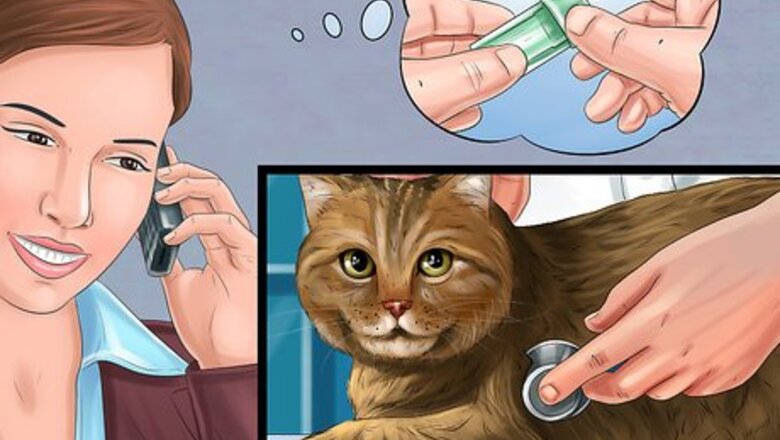
views
X
Research source
Lung flukes are parasites that come from crayfish and live in cats for part of their life cycle. Once the parasite is inside a cat's body, a fluke develops in the cat's lungs. This can cause a variety of respiratory symptoms, such as a cough or breathing difficulty. If you suspect that your cat may have this infection, you should have the cat seen by a veterinarian so they can diagnose and treat it as soon as possible.[2]
X
Research source
Getting a Veterinary Diagnosis
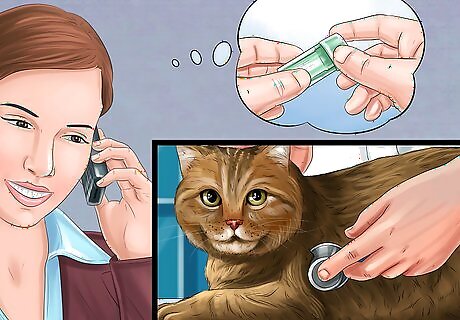
Take your cat to be seen by a veterinarian. It can be really scary to see your cat have breathing troubles. Stay calm, and make an appointment to see the vet as soon as possible. A persistent cough or wheezing can be a symptom of a variety of health issues, but the cause should be assessed by a veterinarian. When you call to make an appointment for your cat to be seen, ask the staff member whether you should bring in a stool sample when you bring your cat in, which can be very helpful for diagnosing a lung fluke infection. When you take your cat to be seen by a veterinarian, be ready to describe your cat's symptoms and when they started.
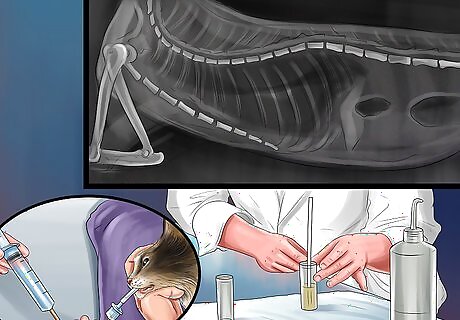
Allow the veterinarian to run tests. There are several tests that may be run on your cat to get a definitive diagnosis, including a special fecal float test, called the Baermann technique. The vet may also want to x-ray the cat's lungs to look for the development of parasites and do a trans tracheal wash to identify ova in the lungs. A transtracheal wash is a procedure in which a sample of respiratory secretions is taken from the cat's trachea and bronchi. Additionally, your veterinarian may want to run tests for secondary infections that have been caused by the lung fluke infection, such as pneumonia.

Wait for test results. In most cases, your veterinarian will need to send samples to a veterinary lab for analysis. A sample that is being tested for lung flukes needs special processing that is usually done in professional labs, not veterinary offices. While waiting for test results, your veterinarian should be working on treating your cat's acute symptoms. This may mean giving your cat oxygen if it is having a hard time breathing or beginning treatment for any underlying infection, such as pneumonia.
Treating a Lung Fluke Infection
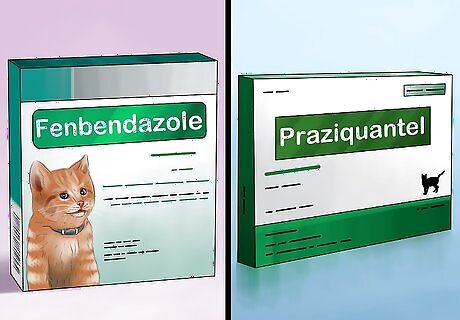
Give your cat anti-parasitic medication. While there are no medications made specifically to treat lung fluke infections, luckily there are some anti-parasitic medications that can eliminate the infection. Praziquantel, which is commonly used to treat tapeworms, is a medication commonly used to treat lung fluke infections. This medication is typically given daily for three days and it will eliminate the lung flukes. Fenbendazole, another anti-parasitic drug, is another treatment that might be used. This is typically taken daily for ten to fourteen days.

Treat additional infections. If your cat's lung fluke infection is advanced, it may cause the cat to have additional problems. These need to be treated separately, in addition to the treatment for the parasitic infection. Discuss treatment options with your veterinarian and begin treatment as soon as possible. For example, your can may have gotten pneumonia due to the lung fluke infection. This typically needs to be treated with antibiotics.
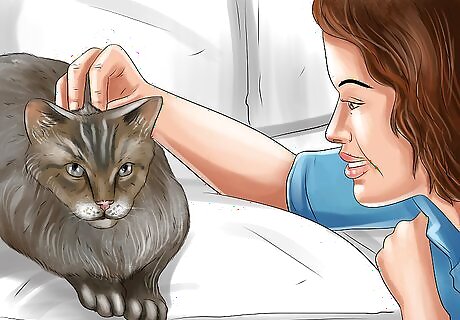
Watch your cat for signs of recovery. As your cat is treated for its infection, the respiratory symptoms it was experiencing should go away. If the cat's symptoms do not begin to clear up after several days for treatment, you should seek out further veterinary treatment. Call your veterinarian if you are concerned about your cat's lack of recovery. They should advise you about whether or not you should bring your cat back in for assessment.
Identifying the Signs of a Lung Fluke Infection
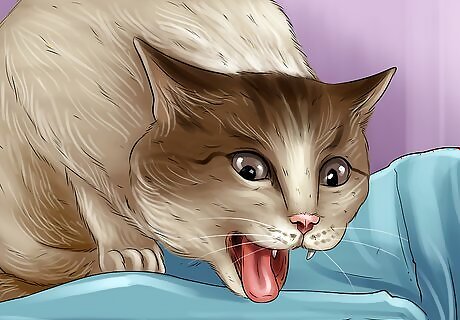
Notice coughing or difficulty breathing. The most common symptoms of a lung fluke infection include coughing and difficulty breathing. The cough will likely come from deep in the cat's chest and bloody mucus may be coughed up as well. While many cats with this infection experience coughing and difficulty breathing, your cat may have no symptoms at all if the infection is mild.
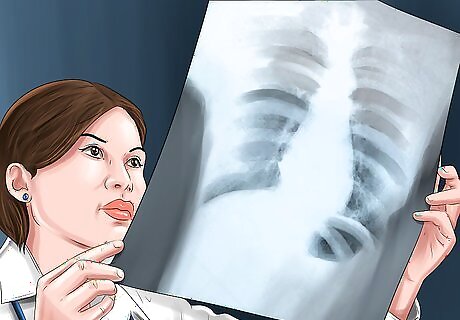
Assess your cat for signs of a respiratory infection. If the lung fluke infection becomes severe, your cat may develop pneumonia, pneumothorax, or bronchiectasis. These infections cause severe breathing difficulty that requires immediate veterinary care. If your cat seems as if it cannot breathe, you need to get it to a veterinarian immediately. Pneumothorax is a condition in which the lungs collapse, due to air collecting in the chest cavity outside the lungs. Bronchiectasis consists of damage to the bronchioles of the lungs, which leads to a thickening, widening, and scarring of the lungs.
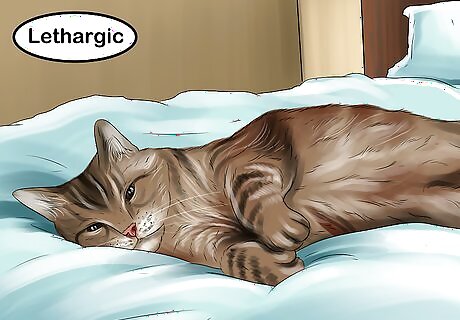
Pay attention to weak and lethargic behavior. If the lung fluke infection becomes very advanced, your cat may have a very low energy level and go into a depression. If your cat has no energy, is not interested in its normal routine, and is having difficulty breathing, then it may have a lung fluke infection. Lethargy and depression can be symptoms of a variety of health problems. These symptoms alone do not indicate that your cat has a lung fluke infection but it does signal a medical problem that should be assessed by a veterinarian.




















Comments
0 comment